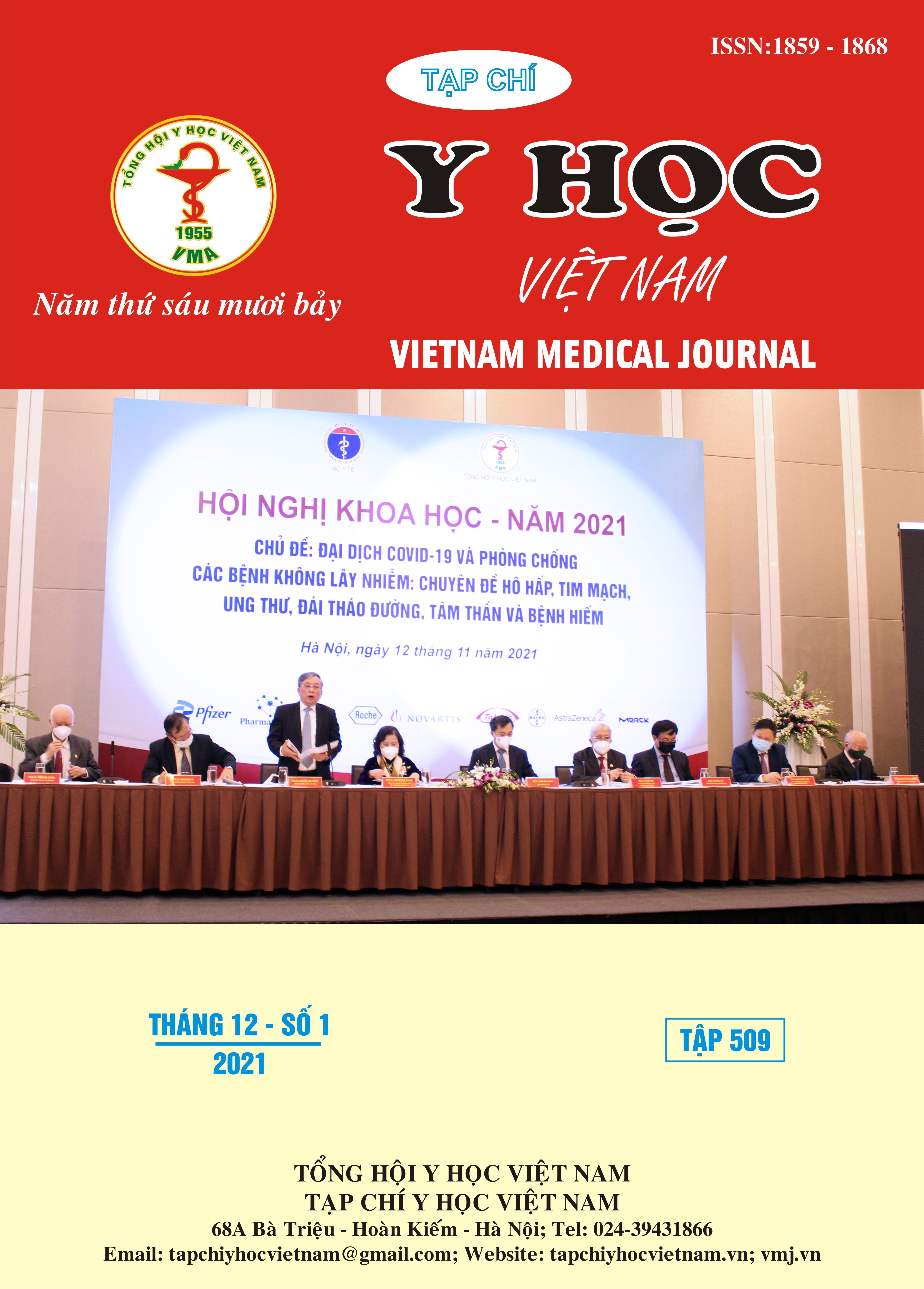ANALYZING THE ASSOCIATION BETWEEN ABDOMINAL AORTIC CALCIFICATION BY BY NON-CONTRAST COMPUTED TOMOGRAPHY SCAN WITH THE DETECTED-KIDNEY DISEASE DURATION, THE DIALYSIS DURATION IN END-STAGE RENAL DISEASE PATIENTS
Main Article Content
Abstract
Objectives: Analyzing the association between abdominal aortic calcification (AAC) by by non-contrast computed tomography (CT) scan with the detected-kidney disease duration, the dialysis duration in end-stage renal disease (ESRD) patients with/without dialysis. Methods: A prospective study was conducted involving 89 ESRD patients who were candidated for kidney transplantation at 103 Military Hospital. Non-contrast CT scan was performed to determine the aortic calcification index (ACI) as a semi-quantitative measure of AAC. Analyzing the univariate correlation and the multivariable logistic regression between AAC and detected-kidney disease duration, dialysis pre-transplant duration and some other factors. Results: There were 89 patients (68 males and 21 females), the median age was 36,0 years (Min-max: 18-66 years). AAC was observed in 67 patients (75,3%) (Median ACI: 4,82%), in which, there were 16 patients had severe calcification (ACI ≥ 20%). Prevalence of AAC significantly increased with age, BMI, detected-kidney disease duration and dialysis pre-transplant duration (p < 0,05). AAC was significantly associated with age older than 30 (OR: 21,33; 25% CI: 5,116 - 88,96), detected-kidney disease duration (OR: 9,975; 95% CI: 3,326 - 29,914) and/or dialysis pre-transplant duration more than 1 year (OR: 7,179; 95% CI: 1,551 - 33,238). Conclusions: Detected-kidney disease duration and dialysis duration are significantly associated with the occurrence of AAC in ESRD patients.
Article Details
Keywords
Abdominal aortic calcification, end-stage renal disease, risk factors of AAC
References
2. Timofte D., Dragoș D., Balcangiu-Stroescu A. E., et al. (2020), "Abdominal aortic calcification in predialysis patients: Contribution of traditional and uremia-related risk factors", Experimental And Therapeutic Medicine, 20(1), 97-102.
3. Tatami Y., Yasuda Y., Suzuki S., et al. (2015), "Impact of abdominal aortic calcification on long-term cardiovascular outcomes in patients with chronic kidney disease", Atherosclerosis, 243(2), 349-355.
4. Verma H., Sunder S., Sharma B., et al. (2021), "Prevalence of Vascular Calcification in Chronic Kidney Disease Stage 4 and 5 Patients and its Correlation with Inflammatory Markers of Atherosclerosis", Journal of Kidney Diseases Transplantation, 32(1), 30.
5. Furusawa K., Takeshita K., Suzuki S., et al. (2019), "Assessment of abdominal aortic calcification by computed tomography for prediction of latent left ventricular stiffness and future cardiovascular risk in pre-dialysis patients with chronic kidney disease: A single center cross-sectional study", International journal of medical sciences, 16(7), 939.
6. Ter Braake A. D., Govers L. P., Peeters M. J., et al. (2021), "Low plasma magnesium concentration and future abdominal aortic calcifications in moderate chronic kidney disease", BMC Nephrology, 22(1), 1-10.
7. Goldsmith D. J., Covic A., Sambrook P. A., et al. (1997), "Vascular calcification in long-term haemodialysis patients in a single unit: A retrospective analysis", Nephron, 77(1), 37-43.


